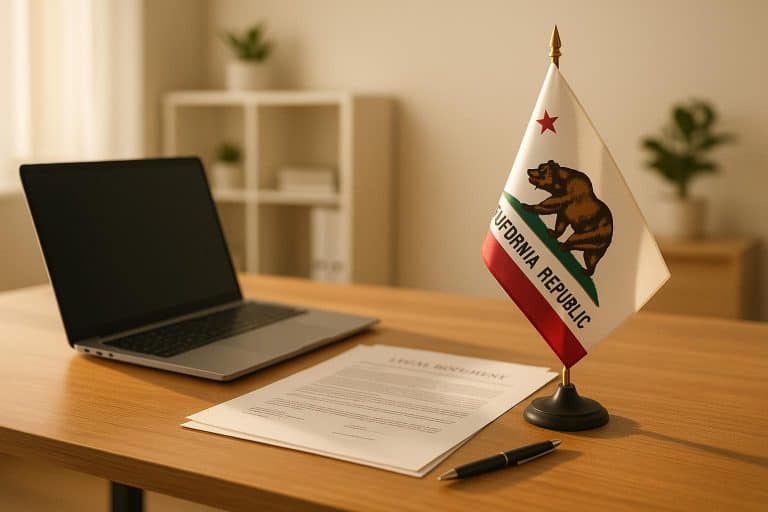Do you know the correct strategies to transfer LLC ownership? Most business owners share a partial interest or sell the entire limited liability company. Whichever you decide, following the proper procedure is crucial.
Fortunately, transferring total control of a limited liability company to a new owner is straightforward. But you might need expert guidance to avoid legal pitfalls.
Ready to discover the correct strategies to transfer LLC ownership with proper documentation? We’ll discuss the steps in more depth. Let’s get started.
Transfer LLC Ownership: What Does It Mean?
Transferring LLC ownership changes the entities or individuals holding ownership interests in a Limited Liability Company. An LLC’s structure combines a corporation’s limited liability protection with a partnership’s flexible management and taxation.
Transferring ownership interests could be due to various reasons, such as redistributing ownership among members, bringing in new partners, or selling the business. It’s governed by the operating agreement and laws of the jurisdiction where you register the company.
Thinking about how to change LLC ownership, start by valuing the organization and obtaining consent from existing members. Negotiate the transfer terms, update official state documents, and draft legal agreements.
Transfer LLC Ownership: How to Do It
Transferring a Limited Liability Company ownership involves administrative and legal steps, ensuring a smooth transition while adhering to the regulations and laws governing such changes.
Whether you’re redistributing ownership among shareholders or passing management control to a new owner, here’s a comprehensive guide on how to succeed:
1. Review the Operating Agreement
When transferring a limited liability company ownership to a new member, your first task is consulting the LLC’s operating agreement. It’s an internal document outlining the procedures and rules guiding the changes.
Furthermore, transferring a limited liability company ownership might require you to provide written consent and approval from all existing LLC members from existing members. It ensures agreement and transparency among all parties. You must follow the laws of your jurisdiction if the business entity has no operating agreement.
2. Value the LLC
After reviewing the limited liability company operating agreement, suppose you’re wondering how to transfer an LLC to another person; your next step is evaluating the organization’s assets, financial statements, and liabilities. Get an accurate valuation for fair ownership distribution to avoid unnecessary legal issues.
3. Negotiate Terms
Getting an accurate valuation of your limited liability company improves your negotiating power. If transferring ownership to a new member, you want to discuss the transfer terms, conditions, and payment structure.
4. Draft a Purchase Agreement
Consider drafting an agreement detailing the terms after negotiating the transfer price and payment structure. It should be legally binding and cover the ownership percentage, representations or warranties, and the purchase price.
5. Amend the Articles of Organization
If you’re wondering how to transfer an LLC to another person, your next step is amending the entity’s articles of organization. It’s the formal legal document used to establish the LLC at the state level.
File an amendment to the company’s articles of organization with the business filing agency in your jurisdiction. Besides, it reflects the ownership change and provides the public with accurate information.
6. Update Operating Agreement
A limited liability company operating agreement is a document that customizes the entity’s management terms based on the members’ specific needs.
Consider revising the operating agreement and ensuring it reflects the new ownership structure. It should include profit distribution, changes in voting rights, and management responsibilities.
7. Obtain Necessary Approvals
After amending the limited liability company’s articles or organization and updating the operating agreement, your next step is obtaining the necessary approvals.
Getting these authorizations might require the existing members’ unanimous or majority vote to finalize the transfer. Therefore, achieve success by reaching out to every shareholder for approval.
8. File Required Documents
When looking to transfer ownership of an LLC, file the required documents with the business filing agency in your jurisdiction. It should include an updated operating agreement, statement of amendment, or other state documents. Be sure to remit payment for any fees associated with the filing process.
9. Update Tax Information
You want to notify the Internal Revenue Service (IRS) when transferring ownership of a limited liability company. The recent owners might require a new Employer Identification Number (EIN).
Inform the Internal Revenue Service about any change in responsibility, including the registered agent. Tell the commission about indirect and direct funds with employee management, whether a total or partial sale, with the form 8822-B.
10. Notify Relevant Parties
Inform banks, vendors, customers, and other relevant parties about the ownership change. Consider updating the business permits, licenses, and insurance policies.
11. Transfer Assets and Liabilities
Your next step after notifying relevant authorities is the transfer of contracts and liabilities. As the purchasing agreement outlined, you move all assets to the new owner.
12. Record the Transfer
Keeping thorough records of the ownership transfer is essential to avoid transfer ownership of LLC tax consequences. Lastly, this documentation is vital for maintaining the process integrity.
Transfer LLC Ownership: Wrapping Up
After learning the correct strategies to transfer LLC ownership, it’s time to make proactive decisions. Remember the process involves legal compliance, open communication among all parties, and careful planning to succeed.
Following these steps and seeking professional guidance from BusinessAnywhere Company Formation Service will help ensure a successful ownership transition. We help business owners navigate the ownership structure’s operational, financial, and legal complexities.








